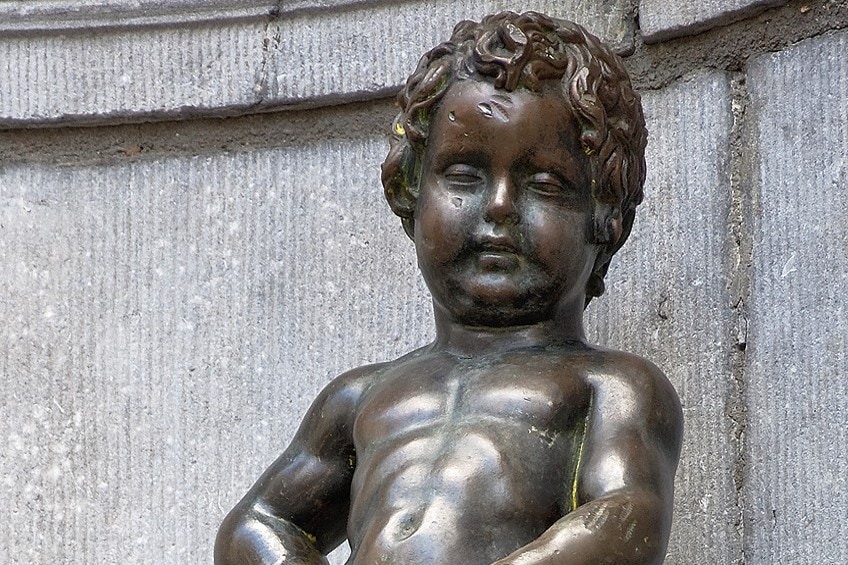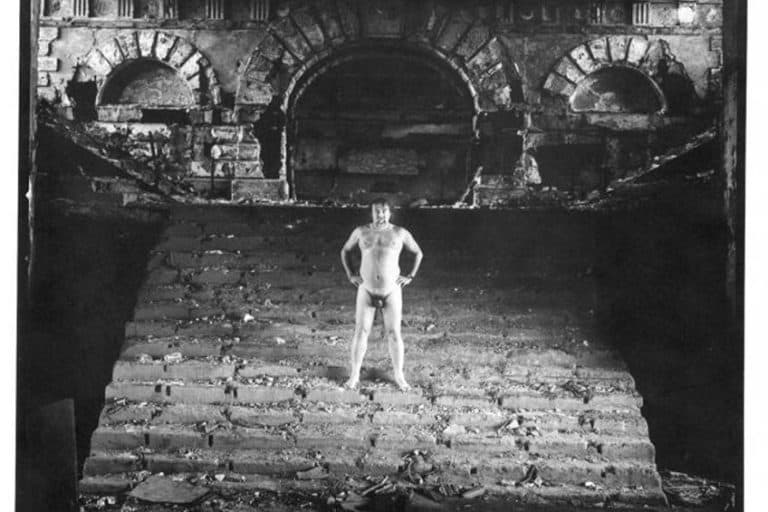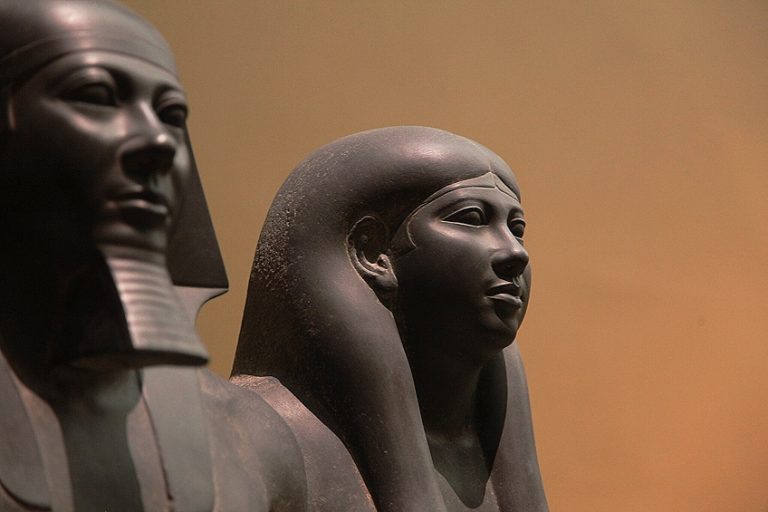“Manneken Pis” Statue – Discover the Famous Peeing Statue in Brussels
The peculiar sculpture known as Manneken Pis was created by Hieronymus Duquesnoy the Elder and features a little boy urinating in a fountain. The peeing statue is 61 centimeters tall and located in Brussels, Belgium, and is one of the most recognized symbols of Belgium. The statue at this location is actually now a replica version, but, the original artwork can be found at the Brussels City Museum.
About the Artist Hieronymus Duquesnoy the Elder
| Nationality | Flemish |
| Date of Birth | 1570 |
| Date of Death | 1641 |
| Place of Birth | Le Quesnoy |
Hieronymus Duquesnoy the Elder was a sculptor who came from the southern Netherlands. In 1595, he married and moved to Brussels, where he became Albrecht and Isabella’s court sculptor. He mostly built church furnishings in addition to working for their castle and grounds. Many statues had to be restored or replaced because of the iconoclasm of the Brussels republic. Jérôme Duquesnoy had two sons: Frans and Jerome the Younger.
Duquesnoy was a competent but not outstanding artist, whether in conception or execution. “The Sint-Martinuskerk” houses his most mature work.

A sacrament tower carved by him (constructed in 1604) has been placed in the choir aisle, roughly at the height of the altar. He is also credited for a comparable tower in Ghent’s Sint-Jacobskerk. Duquesnoy had previously built the city’s grander Satyr Fountain in 1617, and he was most likely the one who repaired the Fountain of the Three Goddesses.
The Manneken Pis (1619) Statue
| Date of Completion | 1619 |
| Medium | Bronze |
| Dimensions | 61 cm |
| Current Location | Brussels City Museum (original) |
The first written reference to the Manneken Pis statue may be discovered in a 1452 administrative record describing the water pipes that serve Brussels’ fountains. The fountain has always played a crucial role in delivering the drinking water. It was supported by a column and spilled water into two stone basins.
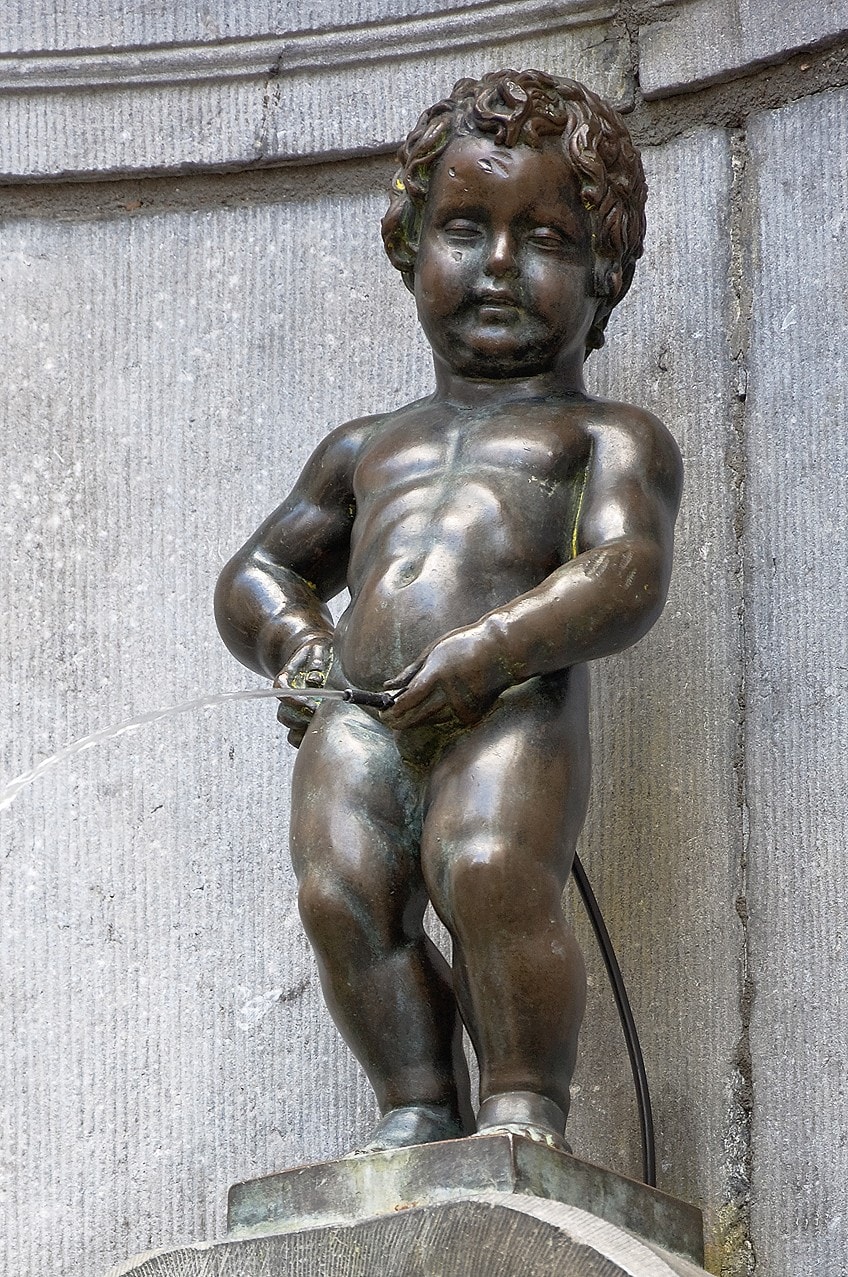
The sole schematic renderings of this early monument may be discovered on a map by mapmakers Frans Hogenberg and Georg Braun, in which the fountain seems to be positioned immediately on the street rather than on a junction as it is today.
The peeing statue reappears in a work by court artists Antoon Sallaert and Denis Van Alsloot dated 1616, showing Brussels’ Ommegang of 1615, as well as in a preliminary drawing to this work, costumed as a shepherd.
History of the Little Boy Peeing Statue
In 1619, the municipal council of Brussels commissioned a new bronze statue to replace the original. This bronze monument, which stands at the intersection of the Stoofstraat and the Lievevrouwbroerstraat, was most likely produced and placed around 1620. The stonecutter Daniel Raessens entirely rebuilt the column holding the sculpture and the double rectangular bowl gathering water during that period.
17th – 19th Century
The Manneken Pis statue has endured several dangers over his life. It escaped the French army’s assault of Brussels in 1695 unscathed, but the pipes were broken, and it couldn’t distribute water for a while. This incident is recounted in a booklet released the same year. This is the oldest text attesting to Manneken Pis‘ transformation into “an object of splendor admired by everybody and famous throughout the world.”
It’s also the first time it’s functioned as a symbol for Brussels residents. It is also reported that it was proudly set back on its pedestal after the bombing.
The fountain was no longer positioned on the street, but in a nook at the intersection of the Eikstraat and the Stoofstraat, as represented by an etching by Jacobus Harrewijn dated 1697. The rectangular basin and the column were removed around 1770, and the sculpture was incorporated into the creation in the shape of a rocaille-style alcove derived from another destroyed Brussels fountain. The water was merely channeled through an opening in the ground, which was eventually replaced with a basin in the nineteenth century.
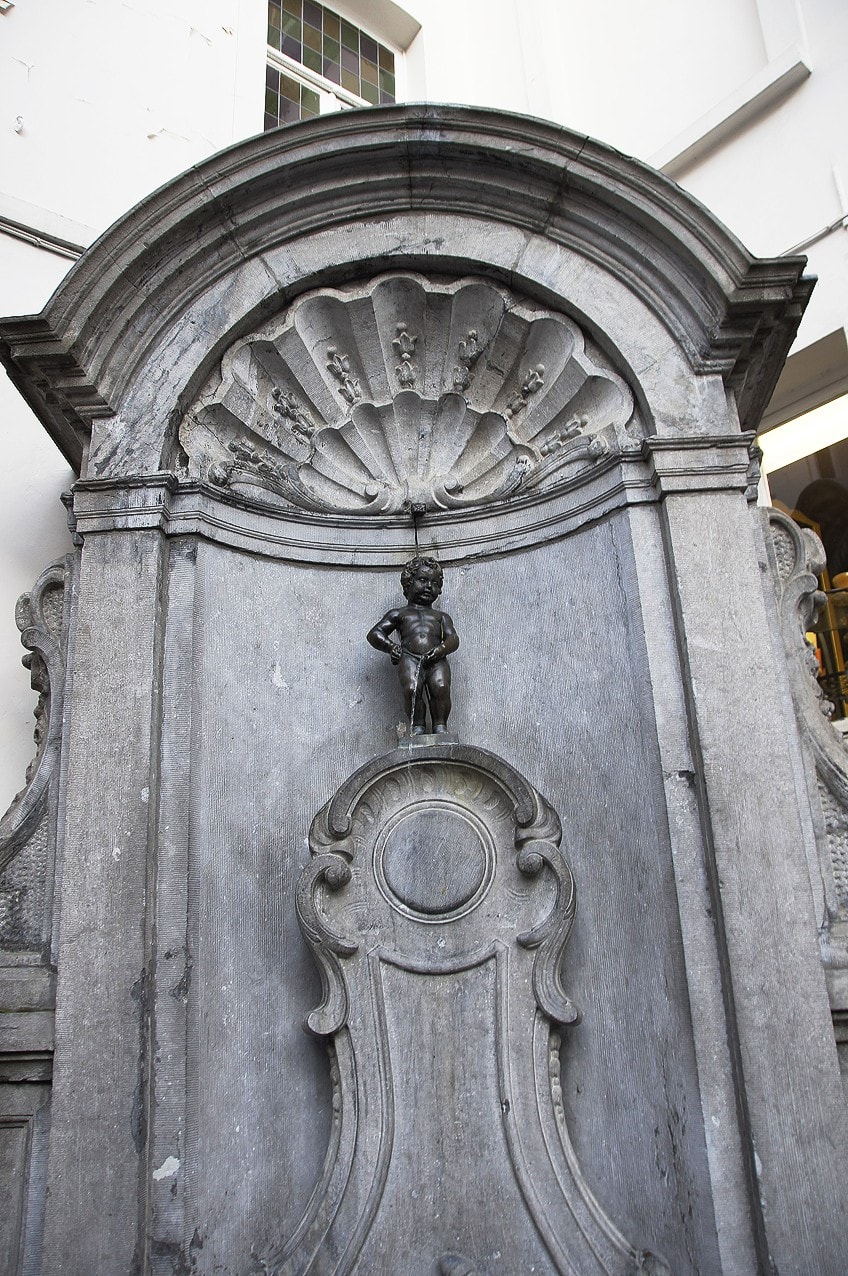
Manneken Pis appears to be smaller in its current surroundings than in its original configuration. Railings, the last form of which originates from 1851, guard the whole building. The latter restricted water access, demoting the fountain to an ornamental and symbolic function. This is likewise true of the other fountains in Brussels during the same period. This corresponds to the City of Brussels’ attempts, which began in 1855, to provide for the delivery of drinking water in private residences.
The figurine has been stolen or attempted stolen several times. The monument was allegedly taken in 1745 and discovered in Geraardsbergen – a Flemish town. The citizens of Brussels presented this city with a duplicate of the statue as a token of their gratitude.
In truth, a company of French grenadiers posted in Brussels tried the first robbery in 1747. The populace was outraged by the act and threatened a bloodbath. To settle things down, Louis XV presented Manneken Pis with a brocade gentleman’s attire embroidered with gold.

He also gave the statue permission to wield the sword and adorned it with the St. Louis Cross. Antoine Licas, a wanted man, stole the statue in 1817. The culprit was severely punished, receiving a life sentence of hard labor after being chained for an hour to stocks on the Grand Place.
Sculptor Gilles-Lambert Godecharle supervised the restoration of the original statue, which had been smashed into eleven pieces during the kidnapping. The components were matched and utilized to create a mold for casting the bronze statue. After that, the statue was bolted into a new base.
20th Century – Present
In the 20th century, Manneken Pis had similar misfortunes. In 1955 and 1957, there were two attempted thefts. According to some reports, it was taken away on up to seven occasions, the most recent time being in January 1963 by pupils from the Antwerp student association “De Wikings” of the Sint-Ignatius, who kidnapped the monument for a week before transferring it over to the local Antwerp authorities.
The tale was covered by the local and international press, which helped the students raise funding for two orphanages. The case went even further, with the old foundry of La Compagnie des Bronzes de Bruxelles replacing the base, which was fastened to the statue by a strengthened bronze connection.
Things became more severe when it vanished in 1965; the burglar had smashed the statue, leaving just the feet and ankles.
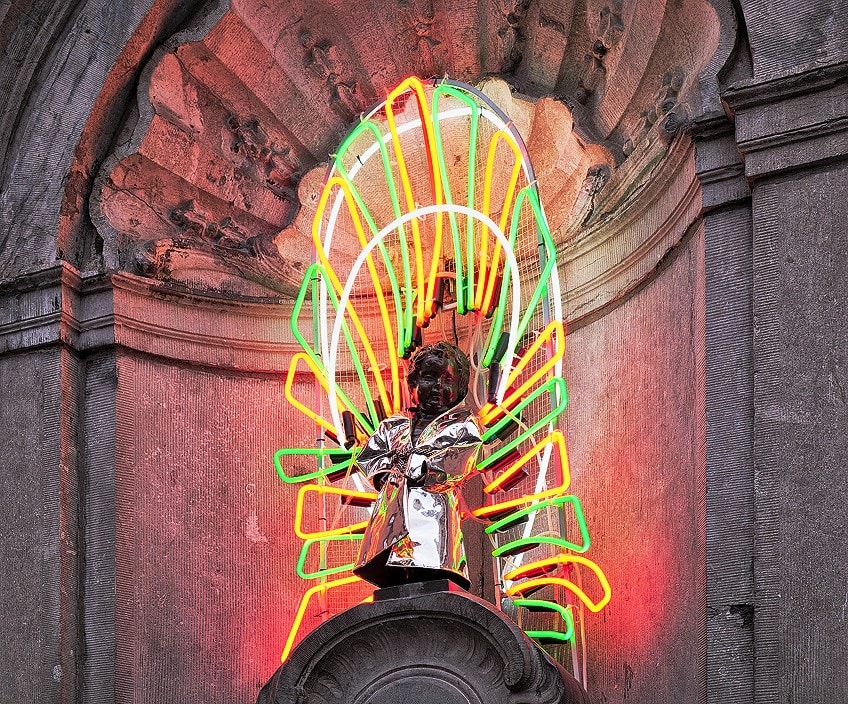
The Antwerp magazine De Post got an anonymous tip-off in June 1966, indicating that the “corpse” had been discovered in the Charleroi Canal. Divers dispatched by the magazine discovered it and brought it back to Brussels on June 27. The monument was restored and is currently housed in the Broodhuis, on the Grand Place. Meanwhile, the Brussels officials had ordered a duplicate of the statue, which was produced by La Compagnie des Bronzes.
The new statue was therefore erected in the alcove on the Rue du Chêne, and this version still graces the niche to this day. In late 2018, city technician Régis Callens noticed that the statue’s basin had developed a leak, resulting in daily water use of 1,500 liters.
The leak went unreported for an unknown number of years among the city’s hundreds of water features and was only identified later with the use of Shayp water monitoring equipment. In March 2019, the monument was given a temporary repair before a permanent recirculating system was constructed. The remedy was disclosed during Brussels Water Week, with city authorities using the incident as a reason to investigate other fountains for similar issues.
Legends
The most well-known mythology surrounding Manneken Pis is one concerning Duke Godfrey III of Leuven. In Ransbeke in 1142, the armies of this two-year-old lord were fighting against the Berthouts, the lords of Grimbergen.
The troops suspended the newborn lord in a basket from a great oak tree overhanging the fight to give themselves confidence.
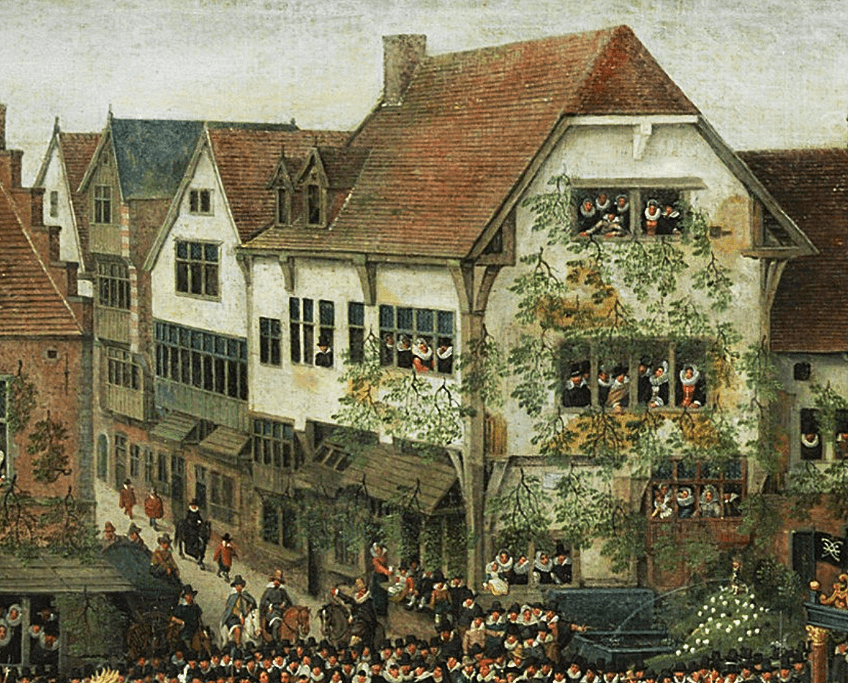
While his forces were in peril, the small duke arose from his position in the basket and urinated on the Berthouts’ warriors, who subsequently lost the fight. This triumph is commemorated by the fountain. The monument is positioned at the intersection of Oak Tree Street, which is named for the iconic tree.
The “Manneken Pis” statue is one of the first sights you see when you arrive in Brussels. The little boy peeing sculpture is a 17th-century bronze fountain figure that stands only 61cm tall. Even the harshest critic would find something to like about this bronze doll, which one would not ordinarily describe as “majestic.” However, the locals have so many tales and methods of rejoicing with this little guy that even the harshest critic would find something to like about it.
Frequently Asked Questions
Who Created the Manneken Pis Statue?
Hieronymus Duquesnoy the Elder was a sculptor from the southern Netherlands who created the Manneken Pis statue. Whether in idea or execution, Duquesnoy was a competent but not great artist. In 1617, Duquesnoy constructed the city’s finer Satyr Fountain.
Where Is the Manneken Pis Statue Located?
Originally, it was located in central Brussels. It is now at the Brussels Museum. A bronze replica now stands in the original’s place. The original is kept in the Brussels City Museum.
Isabella studied at the University of Cape Town in South Africa and graduated with a Bachelor of Arts majoring in English Literature & Language and Psychology. Throughout her undergraduate years, she took Art History as an additional subject and absolutely loved it. Building on from her art history knowledge that began in high school, art has always been a particular area of fascination for her. From learning about artworks previously unknown to her, or sharpening her existing understanding of specific works, the ability to continue learning within this interesting sphere excites her greatly.
Her focal points of interest in art history encompass profiling specific artists and art movements, as it is these areas where she is able to really dig deep into the rich narrative of the art world. Additionally, she particularly enjoys exploring the different artistic styles of the 20th century, as well as the important impact that female artists have had on the development of art history.
Learn more about Isabella Meyer and the Art in Context Team.
Cite this Article
Isabella, Meyer, ““Manneken Pis” Statue – Discover the Famous Peeing Statue in Brussels.” Art in Context. May 23, 2022. URL: https://artincontext.org/manneken-pis-statue/
Meyer, I. (2022, 23 May). “Manneken Pis” Statue – Discover the Famous Peeing Statue in Brussels. Art in Context. https://artincontext.org/manneken-pis-statue/
Meyer, Isabella. ““Manneken Pis” Statue – Discover the Famous Peeing Statue in Brussels.” Art in Context, May 23, 2022. https://artincontext.org/manneken-pis-statue/.


